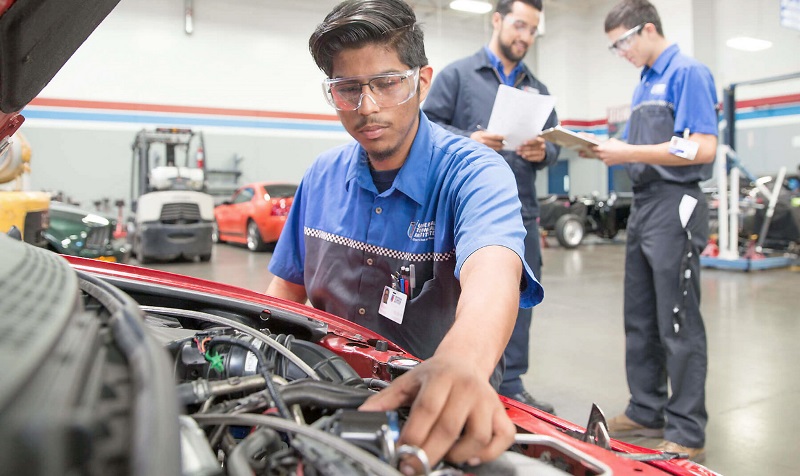
Headrest hooks can transform the back of your car into additional storage space. Not only do they provide a place to hang items, but they also prevent your luggage from rolling around in your car. Backseat organizers also provide additional storage space and are perfect for road trips with kids. You can keep small items organized, such as snacks and tablets. They can also be used to store drinks and activities. These accessories make long trips on the road a lot easier.
MeeFar MeeFar boxes
MeeFar car accessories protect valuables, and make packing and unpacking much easier. The roof cargo carrier can be used to store up 110 pounds of gear. The Velcro attachment system makes it easy to attach this car accessory. It is the ideal storage solution for road trips as well as camping trips.

MeeFar's box has anti-slip rubber mats, a lock that protects your valuables, as well as six security hooks. This bag can hold both your tablet or laptop in one place. You can even watch YouTube videos while you work. The headrest mount can also be used to store your phone. The MeeFar Box can protect your belongings and keep your food cool.
Brita Plastic Water Filter Bottle
For any driver, a water bladder is a must. It's even more important to bring one when you are out and about. Not only will you be able to refuel your body and stay hydrated but you can also do your part in protecting the environment. Brita Water Filter Bottles can help your water stay colder for longer. This product is durable.
The popular filter bottle has a unique design with a bamboo handle that makes it easy to carry. It is also made from 65% renewable materials and is BPA-free. You will love the taste of pure water. And you can take it everywhere with you. Whether you're traveling for business or pleasure, a Brita filter bottle is an excellent travel accessory. These bottles can be used easily.
CamelBak Vacuum Insulated Stainless Steel Bottle
CamelBak Vacuum insulated, Stainless steel bottles have a 600mL capacity. They also feature double-wall vacuum insulating technology. It can keep your drinks warm for up two hours or cold for up six hours. The bottle is BPA-free, and the lid features a leak-proof magnetic cap and carry handle. The bottle comes with an unconditional lifetime guarantee.

CamelBak Vacuum Insulated Stainless Steel Bottles are also durable and environmentally friendly. No matter how many drops you drop, stainless steel bottles will still retain their insulation. Stainless steel bottles are typically heavier and thicker than plastic bottles, but they are BPA-free and do not have to be washed. These bottles can also be washed in a dishwasher and can withstand high temperatures without cracking.
FAQ
What length is an automotive course?
An automotive course is three years long.
The first year focuses on theory and learning about cars. The second year is spent on practical training where you learn how to drive, fix engines, and do other mechanical jobs around the car. The final year is spent doing a placement at a local garage, which gives you experience in fixing real-world problems.
What qualifications do you need to be a mechanic?
A series of tests is required to be a mechanic. These include:
-
A general knowledge test
-
A practical exam
-
An apprenticeship test
These tests are intended to make sure you have a solid understanding of the basics of mechanics before you can start your career as a mechanic.
After passing these tests, you will be eligible to become a mechanic. You will still need to complete an apprenticeship. This will involve training in the trade.
To learn all you can about vehicle repair, you will need to take classes and workshops. Additionally, you will need to work with experienced mechanics.
A mechanic must be highly focused and attentive to detail in order to succeed. You will need to pay careful attention to every aspect when repairing vehicles.
You'll need patience and persistence to become a successful mechanic. If you don’t enjoy following instructions, this might not be the right career path.
However, if you love cars or enjoy working on them, you might be happy in this field.
Is it hard to be a mechanic apprentice?
It's not easy, but you learn fast, and there are many opportunities for advancement.
You will need patience and perseverance. Also, you must know how to fix trucks, cars, and motorcycles.
There is a lot of pressure from customers and family members who want you to succeed. You shouldn't feel pressured to make decisions that you don't like.
This could be an excellent career choice for someone who enjoys fixing cars. You can make a decent living and build your business.
However, you might prefer to go down another route. This is where you might be interested in becoming a technician.
This could involve using your technical knowledge to support other employees. Technical support could include helping technicians to troubleshoot issues or teaching them new techniques.
Another option is becoming a service advisor. As a service advisor, you will provide assistance and advice to customers as they bring their car to a garage.
It all depends on your goals. There are plenty of options available, and you can choose which suits you best.
Statistics
- 52% of Mechanics in the United States think their salaries are enough for the cost of living in their area. (indeed.com)
- The U.S. Bureau of Labor Statistics (BLS) reports that the job outlook for automotive service technicians and mechanics is expected to decline by 4% from 2019 to 2029. (indeed.com)
- According to the BLS, total auto technician employment is expected to exceed 705,000 by 2030. (uti.edu)
External Links
How To
How to properly diagnose your vehicle for repair
The symptoms of your vehicle are the first thing you need to look at in order to determine whether it is in dire need of repairs. These steps will help you diagnose your car properly.
-
Check engine lights. Check the dashboard light indicators such as the engine light indicator, the oil pressure gauge, the battery light indicator, the coolant temperature gauge, and the RPM gauge. If they have been flashing for more days than usual, it could be a sign that something is wrong with the vehicle.
-
Examine the treads of the tires. Tires that are worn can cause issues with handling and braking. The treads of the wheels should be inspected as well. They should be clean, and they should be smooth. The best way to do this is to remove the wheels and take them off. Check the tread condition with a flashlight.
-
Pay attention to the level of your brake fluid. Keep track of the brake fluid level in your vehicle. You can ensure that your brakes are working properly by monitoring the level of brake fluid in your vehicle. If the brake fluid level is low, your brakes might fail when you apply pressure to them.
-
The suspension system should be tested. Most vehicles have a suspension system that absorbs shocks and vibrations. It improves control and allows for smoother accelerations or decelerations. If your vehicle has a suspension problem, it might feel wobbly or shake uncontrollably. You can test if your vehicle has a suspension problem by putting weight on either the front or back axle to see how it moves.
-
Examine the steering column. Steering columns connect the steering wheels to other parts of the vehicle. Accidents often damage steering columns. If yours feels loose or shaky, you should replace it.
-
The exhaust pipe should be observed. The exhaust pipes transport gases from the combustion chamber to outside. You can let harmful fumes into your home if your exhaust pipes crack or leak. If your tailpipe bends, it is important to fix it immediately.
-
Look under the hood. Check under your hood for any unusual or missing components. You could have fluids leaking from the engine. If you smell something strange coming from your engine compartment you should call a professional technician.
-
The air filter should be checked. The air filter in your vehicle collects dirt and dust from the environment. Vehicles that have a dirty air filter will not run well. Replace your air filter regularly.
-
Verify the fan belt. Your vehicle's fanbel is what connects the engine and the transmission. If the fan belt is damaged, the engine won’t turn. The process of replacing the belt is straightforward. All you need to replace the belt is a screwdriver with pliers.
-
Verify the radiator hoses. The radiator hose carries water from the radiator to the engine. It can cause hot liquid to leak onto the engine if it is damaged or cracked. To repair the leaky hose, all you need is a pair if needle-nosepliers.
-
Be sure to inspect your windshield wipers. Windshield wipers use electricity to remove snow and rain. If they stop working, they could leave streaks on your window glass. Change the washer fluid to fix the problem.
-
The battery cables should be checked. Your car's electrical system is powered by batteries. If you are replacing batteries, disconnect the negative cord first. Failure to do so can damage your alternator.
-
Check the headlights. The headlights will illuminate the road ahead. It can lead to poor visibility if they aren't working properly. You can check the bulbs to make sure they aren't burned out.
-
Pay attention to the lights. When you approach them at night, the lights warn other drivers. If one doesn't work, it could distract you and lead to an accident.
-
Inspect your brakes. Brakes slow down your vehicle before a collision. If they aren't working correctly, you could lose control of your car and crash.
-
Change your oil. Oil keeps your engine lubricated. It protects metal parts and prevents them from wearing too quickly. It is recommended that you change your oil at least once per month.